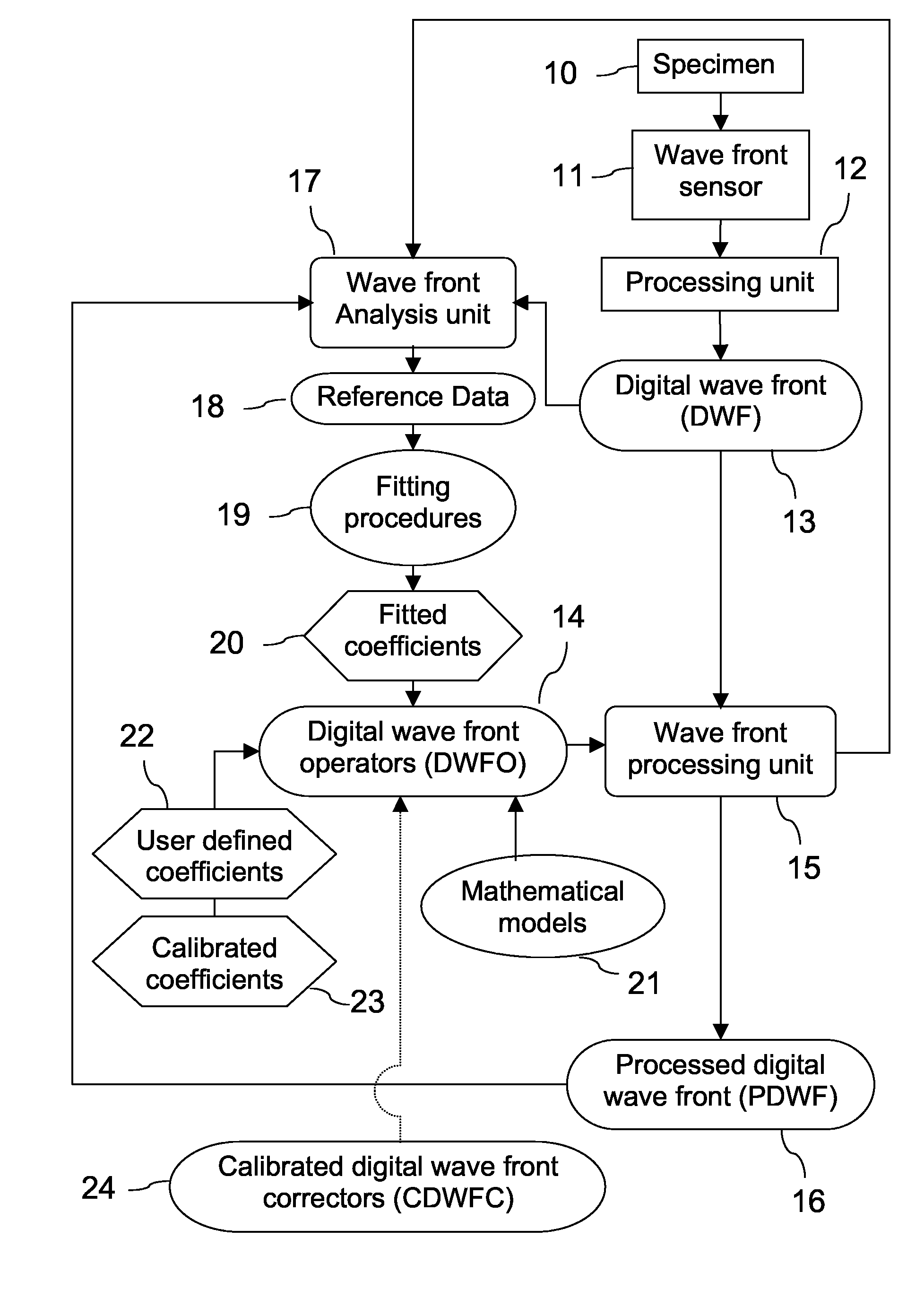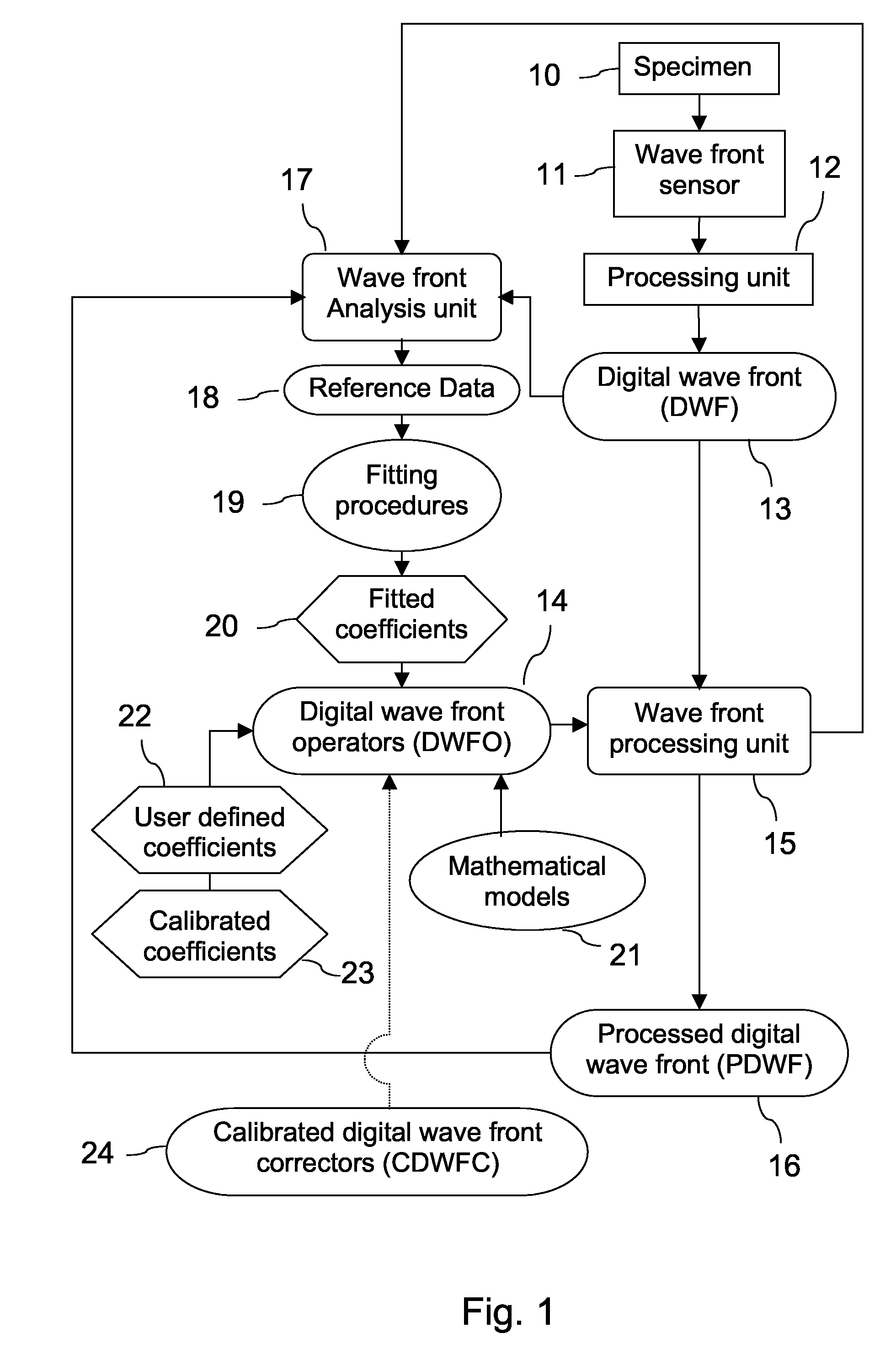Wave front sensing method and apparatus
a wave front and sensing technology, applied in the field of wave front sensing, can solve the problems of reducing the field of applications to environments and expensive instruments, and achieve the effects of improving performance, in particular speed and image quality, and reliable wave front sensing performan
- Summary
- Abstract
- Description
- Claims
- Application Information
AI Technical Summary
Benefits of technology
Problems solved by technology
Method used
Image
Examples
Embodiment Construction
General Description of the System
[0139]As shown in FIG. 1, a wave front sensing system according to the present invention comprises a specimen (10) investigated by a wave front sensor (11). The wave front sensor (11) is connected to a processing unit (12) providing a digital wave front DWF (13). The digital wave front DWF (13) is processed by at least one digital wave front operator DWFO (14), thanks to a wave front processing unit (15), in order to produce a processed digital wave front PDWF (16). A wave front analysis unit (17) is connected to at least one of: the digital wave front DWF (13), the wave front processing unit (15), the processed digital wave front PDWF (16). The wave front analysis unit (17) provides reference data (18). At least one fitting procedure (19) is applied on the reference data (18) to provide fitted coefficients (20). At least one digital wave front operator DWFO (14) is defined using at least one mathematical model (21) and using at least one of: the fit...
PUM
 Login to View More
Login to View More Abstract
Description
Claims
Application Information
 Login to View More
Login to View More - R&D
- Intellectual Property
- Life Sciences
- Materials
- Tech Scout
- Unparalleled Data Quality
- Higher Quality Content
- 60% Fewer Hallucinations
Browse by: Latest US Patents, China's latest patents, Technical Efficacy Thesaurus, Application Domain, Technology Topic, Popular Technical Reports.
© 2025 PatSnap. All rights reserved.Legal|Privacy policy|Modern Slavery Act Transparency Statement|Sitemap|About US| Contact US: help@patsnap.com



